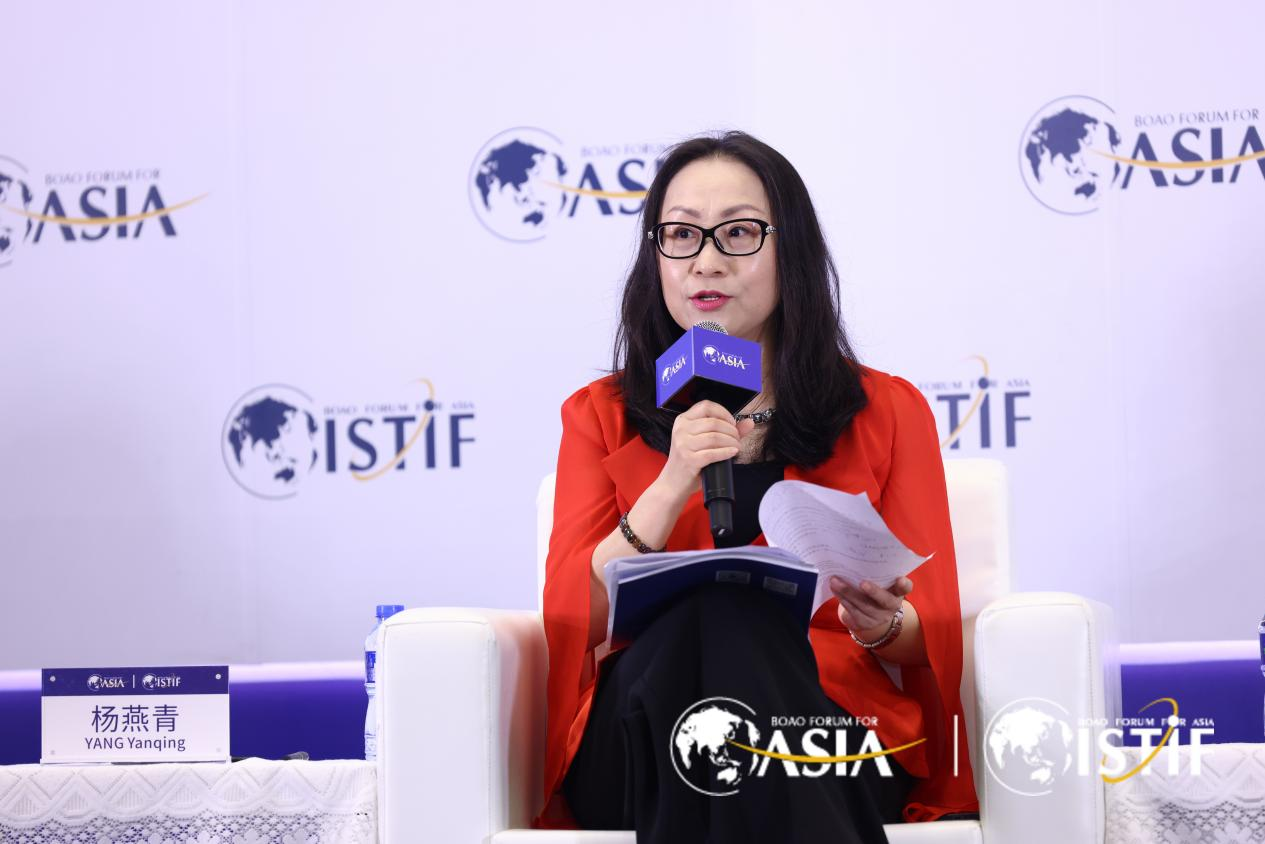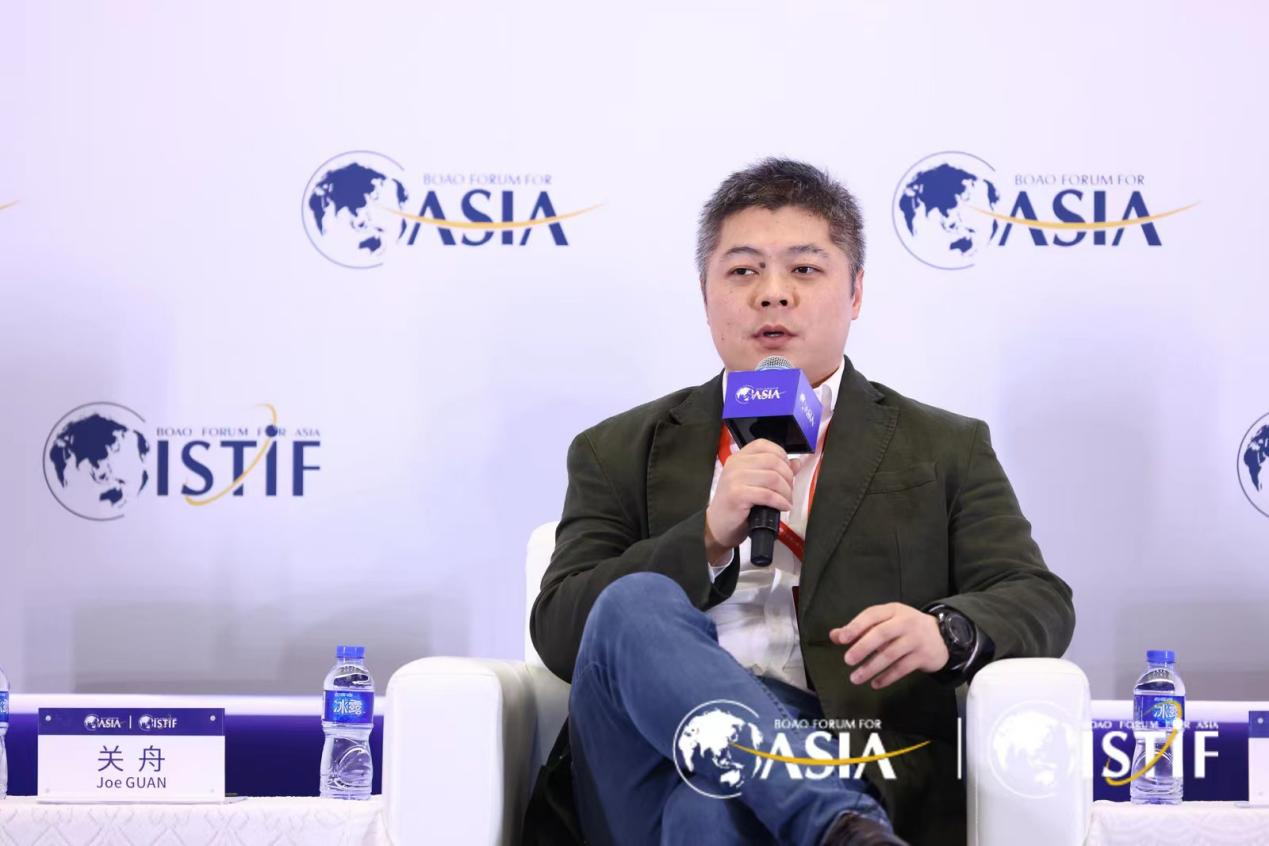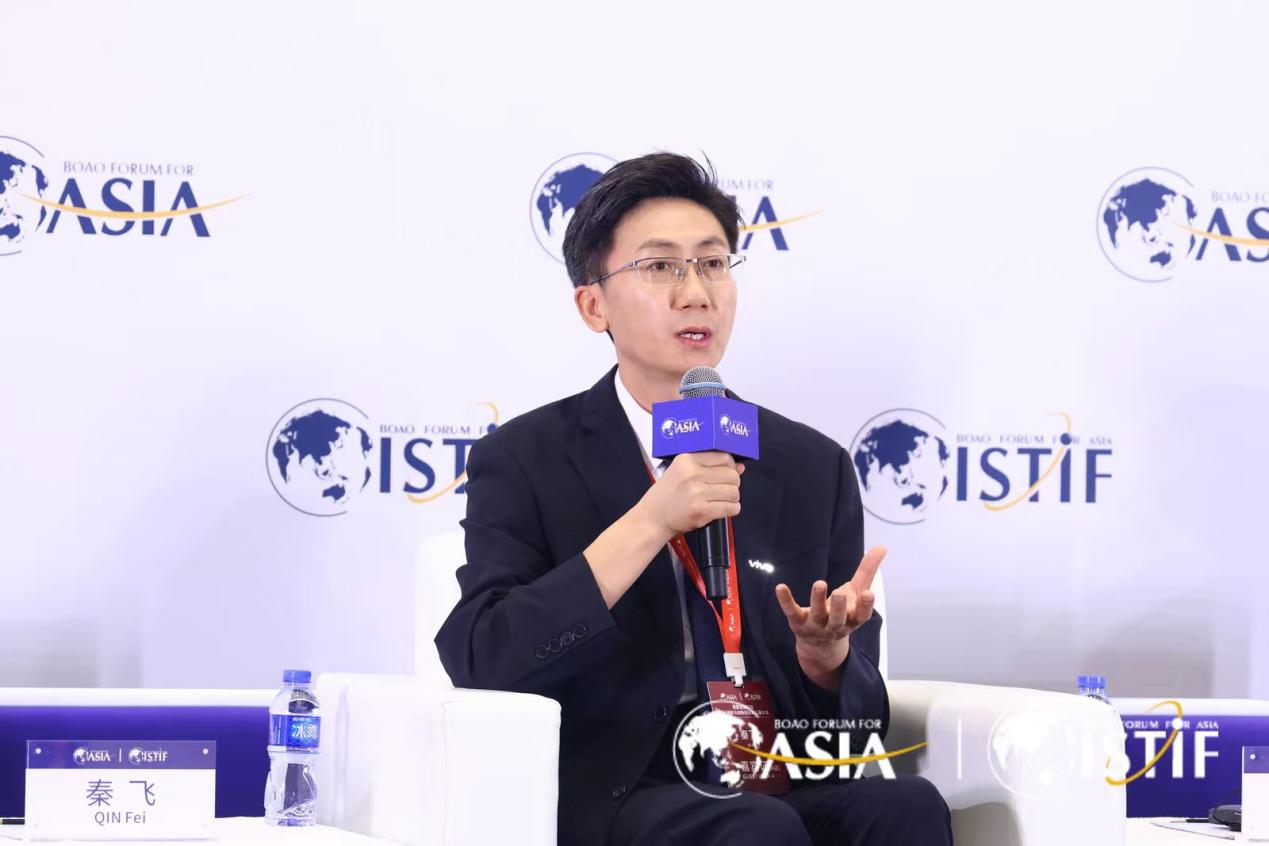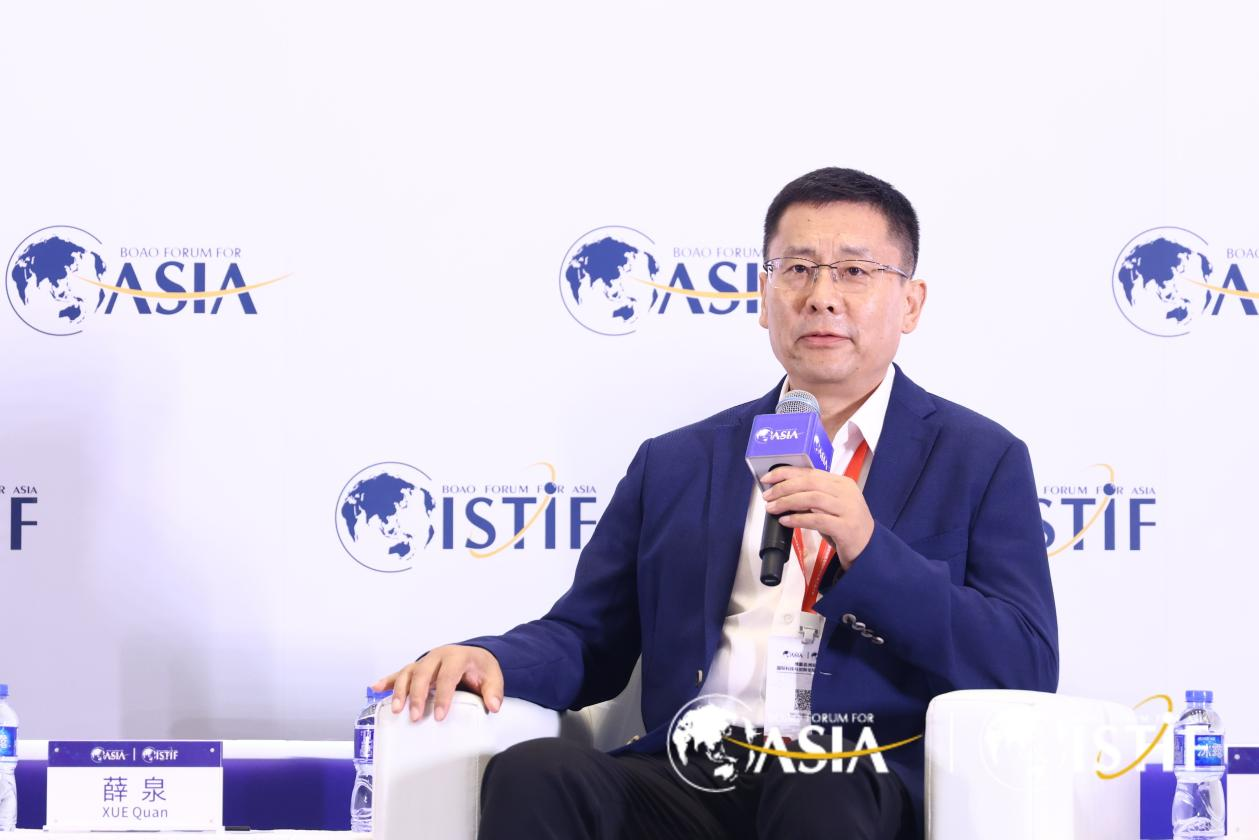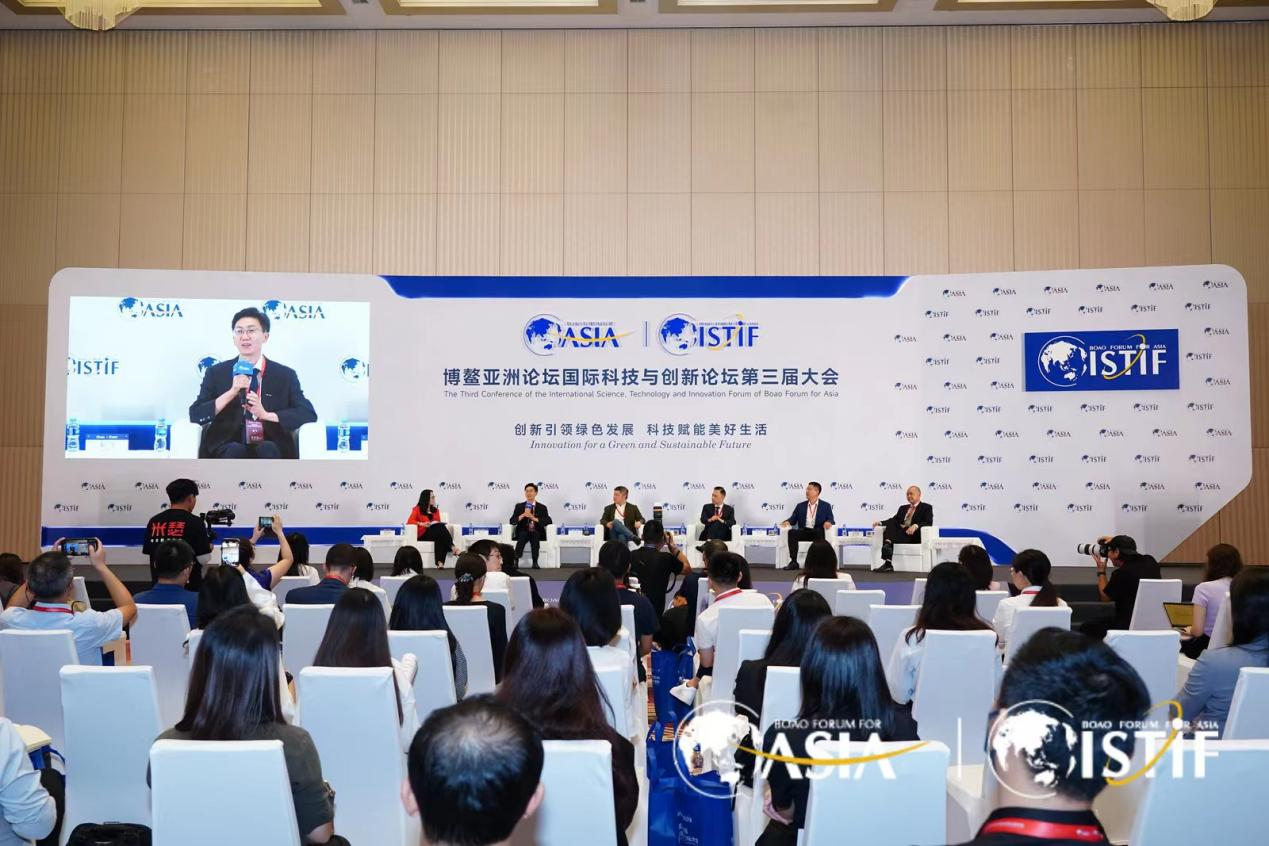The session was moderated by YANG Yanqing, Head of Planning&Development Department, Shanghai AI Laboratory; Professor of Economics, Fudan University. Luigi Gambardella, President of China-Europa Digital Association, delivered a speech. GUAN Zhou, General Manager of Public Policy of GSMA Greater China; QIN Fei, President of vivo Communications R&D Institute; WANG Xinhui, Vice President of ZTE Corporation; XUE Quan, Dean, School of Electronics and Information, South China University of Technology, and U Seng Pan, Co-founder and currently Council President at the Macao Institute of Industrial Technology and Co-founder of the State Key Laboratory of Analog & Mixed-Signal VLSI at University of Macau, started the discussion around mobile communications.
Luigi Gambardella stated in his speech that 5G is expected to be commercialized around 2020, while the 6G era is anticipated to begin around 2030, which is expected to redefine the paradigm of mobile communication. The focus of the 5G era is to achieve human connectivity, namely the Internet of Things (IoT), while 6G will further promote the transformation from physical connections to true ubiquitous intelligence, laying the foundation for a more intelligent society.
During the panel discussion, GUAN Zhou expressed that the era of mobile communication undergoes significant changes every ten years. While there is still room for exploration in the 5G market, the development of 6G has quietly begun. XUE Quan pointed out that the deployment of 6G requires an understanding of four key characteristics: richer spectrum, base stations, services, and extensions. Xue Quan also acknowledged the promising prospects of millimeter waves and terahertz technology.QIN Fei analyzed the transition from 5G to 6G from an industrial perspective, emphasizing the fusion of communication, computing, and information technologies as the core. Qin Fei also highlighted the need to provide a suitable cellular frequency band for 6G communication. WANG Xinhui believed that the practical deployment and successful application of 5G and 5G advancements have laid a solid foundation for 6G technology. Wang Xinhui also pointed out that the network requirements for 6G will be diversified.U Seng Pan shared his insights on the leap from 2G to 6G in mobile communication, highlighting the convenience that the transition brings to human information exchange and the numerous services it provides. However, Yu Chengbin also emphasized the need for technological breakthroughs to address the challenges of green and low-emission, low-energy consumption requirements.
5G and 6G represent breakthroughs in cutting-edge technology and are reshaping the standards in the mobile communication industry. They play a crucial role in laying the foundation for a new era of mobile communication. The panelists unanimously agreed that 5G applications have achieved a breakthrough from "0" to "1" and are now transitioning from "1" to "N." The prospects of 5G applications are still being explored, and 6G, building upon the foundation of 5G, will facilitate a faster leap from the Internet of Things to the Internet of Intelligent Things. This transition will lead to an increasing variety of digital services for humans.Currently, 6G mobile communication is in the early stages of development, and vision requirements are yet to be determined. Key technologies have not formed a consensus within the industry. However, the emergence of 6G will bring disruptive changes to mobile communication.
